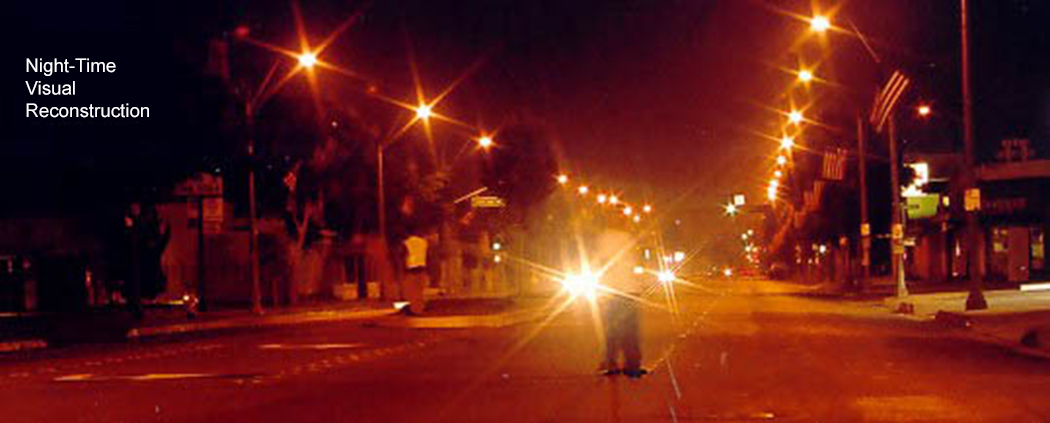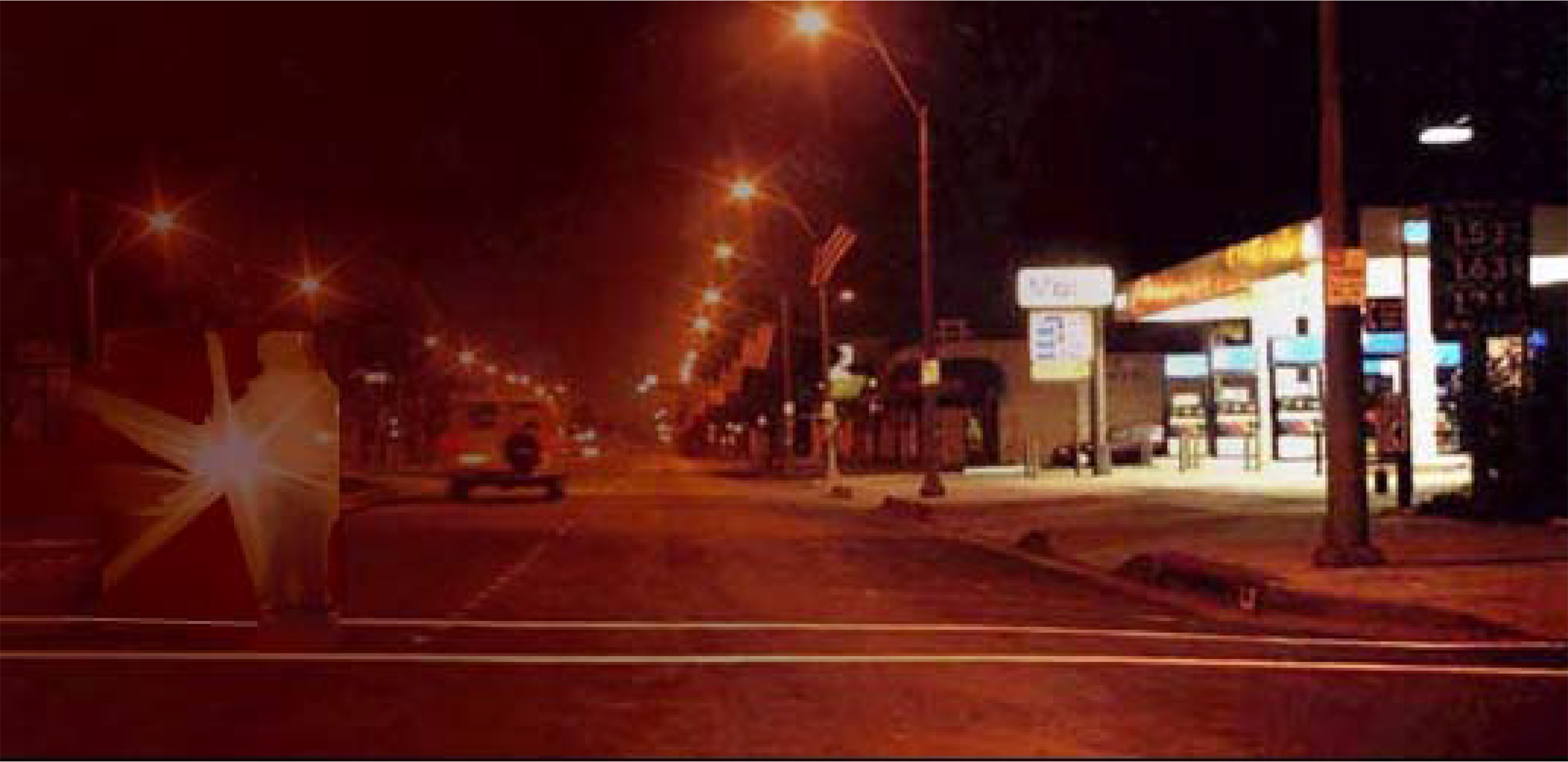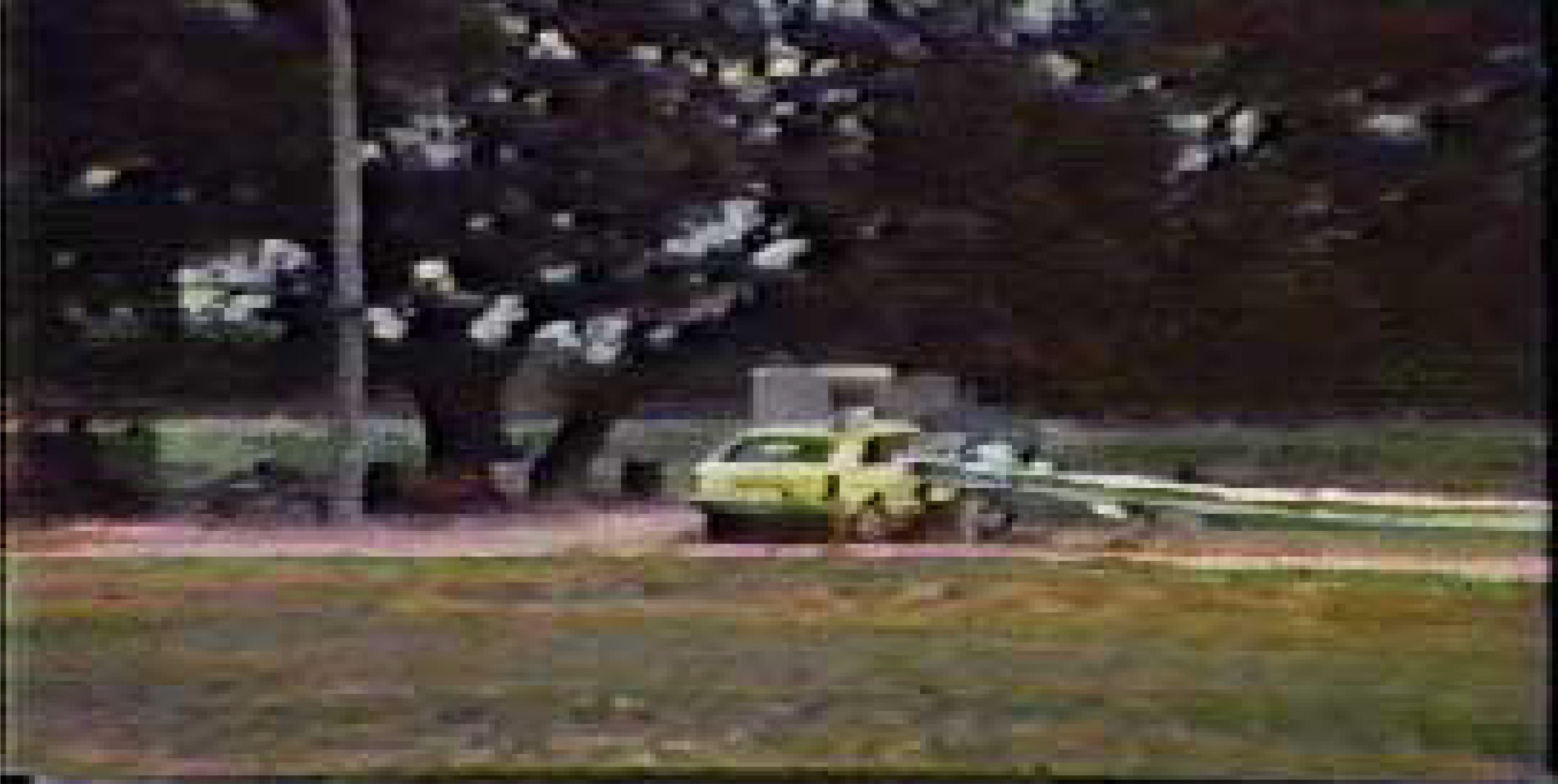 |


An accident occurred on this busy street at night. The street was lit with "amber" street lighting, which is notorious for its ability to "mask" even high contrast colors. The plaintiff was struck by 2 separate cars while crossing the street, and carrying a 5 gallon bottle of water. He is crossing in the unmarked crosswalk nearest the camera in this intersection. Photographs like this, showed that the plaintiff was obscured from view (these photographs were taken at 3:00 AM, when there was light traffic). The actual incident occurred near 9:00 PM at night, when there was much more traffic, and more blinding lights from approaching vehicles. In this situation, not marking a crosswalk on a well traveled road, with many Pedestrians, can be dangerous. 
Even though the pedestrian is no more visible with or without the crosswalk, the crosswalk stripes are easy to distinguish in this situation. The 1970's studies on crosswalk safety that inferred marked crosswalks are more dangerous than unmarked crosswalks, did not consider night-time use. 
NOTE: In the 1980’s, many agencies stopped putting in crosswalk markings after a crosswalk was covered when the road was resurfaced. This was partly due to the 1970’s “Crosswalk Study” which indicated that a marked crosswalk was more accident prone than an unmarked crosswalk. The study was conducted on nearby crosswalks which were painted or not painted. One problem with the study was that the marked crosswalk attracted more users than the unpainted crosswalk, hence the more heavily traveled painted crosswalk had more users and therefore more conflicts and therefore the painted crosswalk could be expected to have more incidents than the lesser used unpainted crosswalk. In any case, night time use was not considered, and therefore night-time pedestrians crossing a roadway could not have the effect considered in the studies. 

Guard Rail and Other Barriers Guard rail and other barriers, when installed and properly designed, are life saving safety features on many roads. When they are not installed correctly, or are installed in the wrong application they can act as obstructions and can be dangerous. The end, or terminal, of the above guard rail allowed the guard rail to fold in the first strike with the car, then the vehicle was turned by the interaction, and the folded end of the guard rail "sliced" through the cab of the vehicle. This particular guard rail installation is very common to California (although not currently installed). This is from a Federal Highway Administration video on proper use of the "Roadside Design Guide," currently accepted as the one standard in all states for barriers and attenuators. |

















